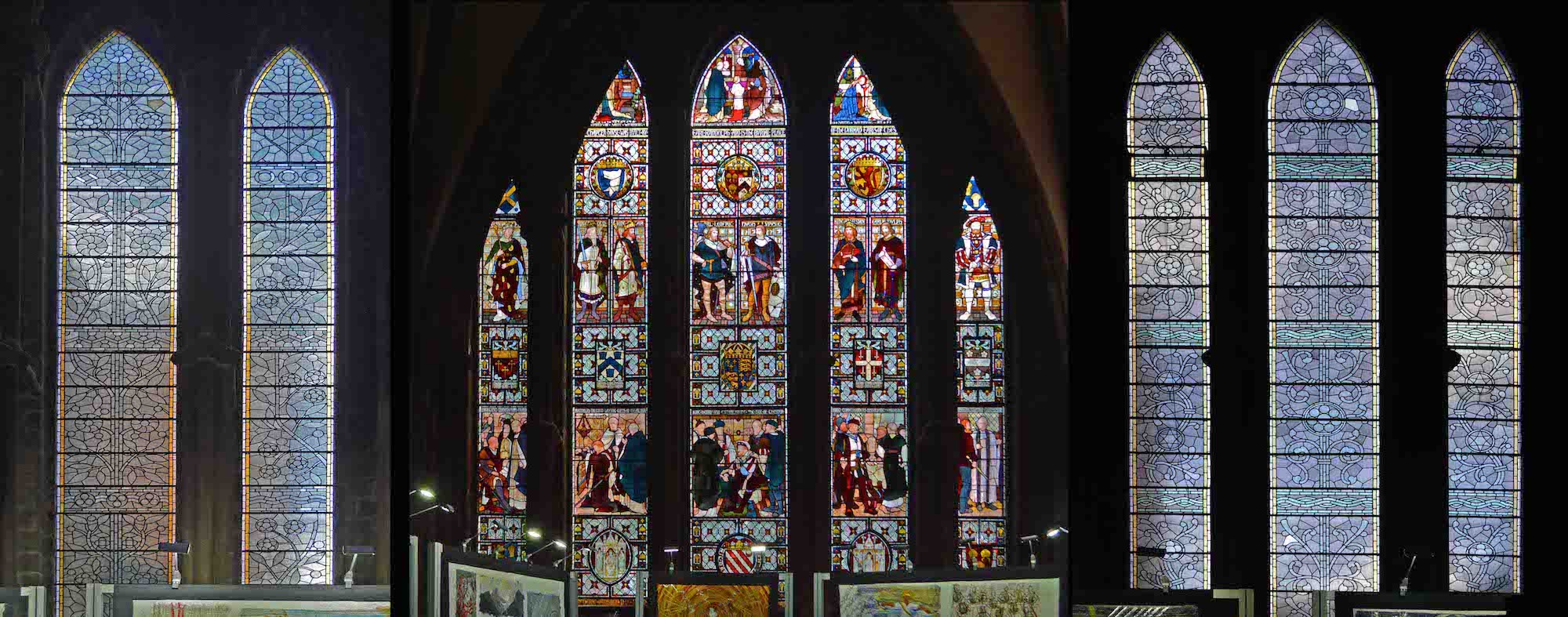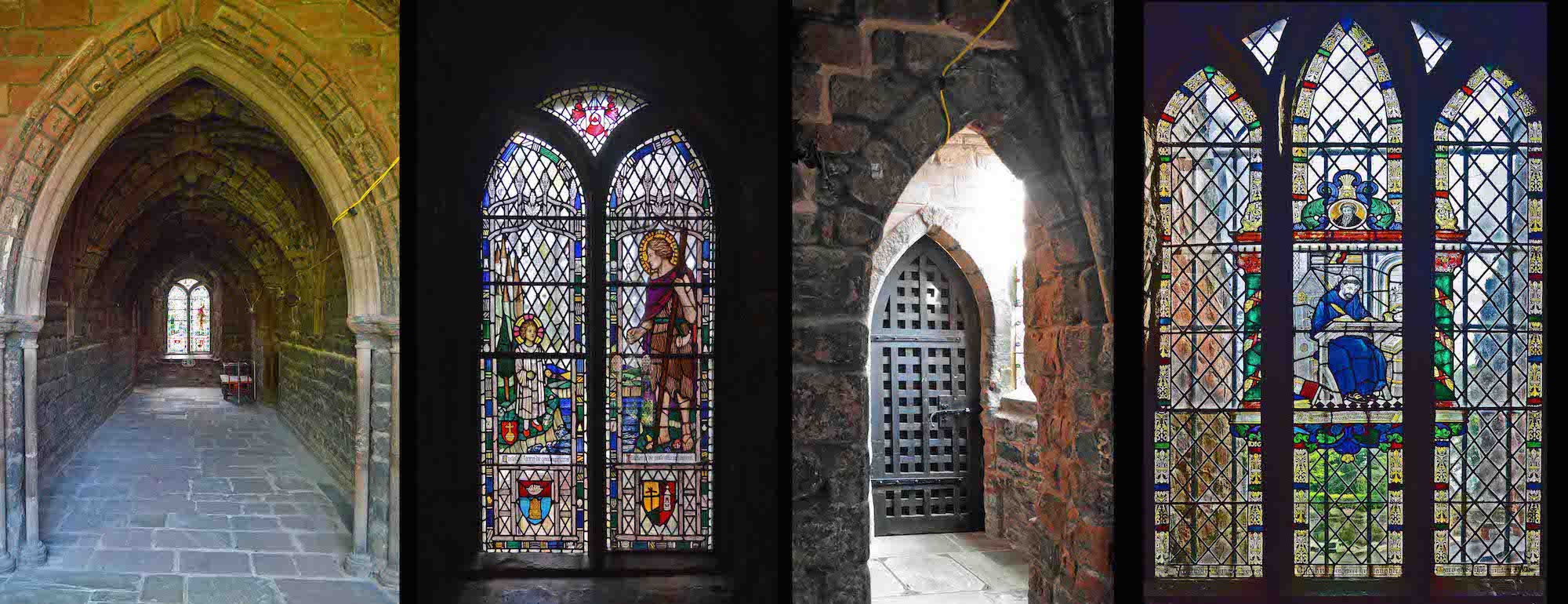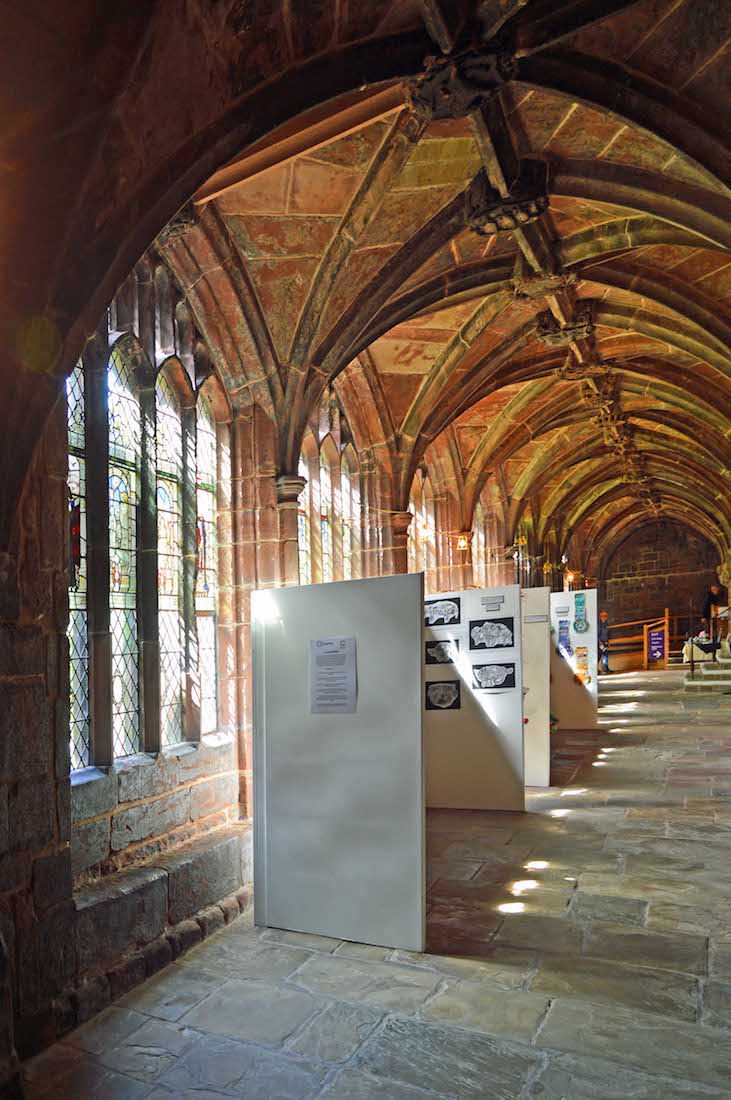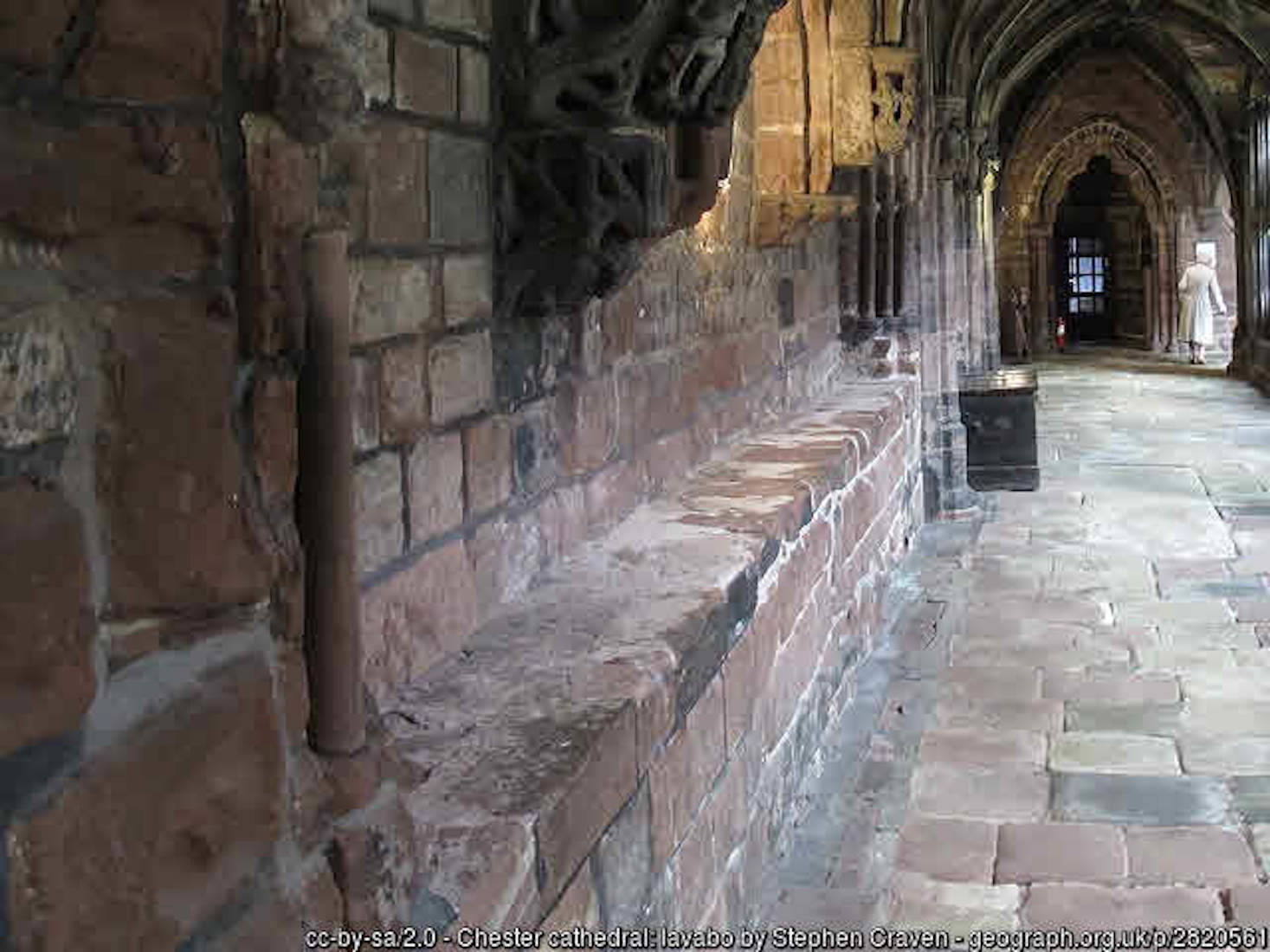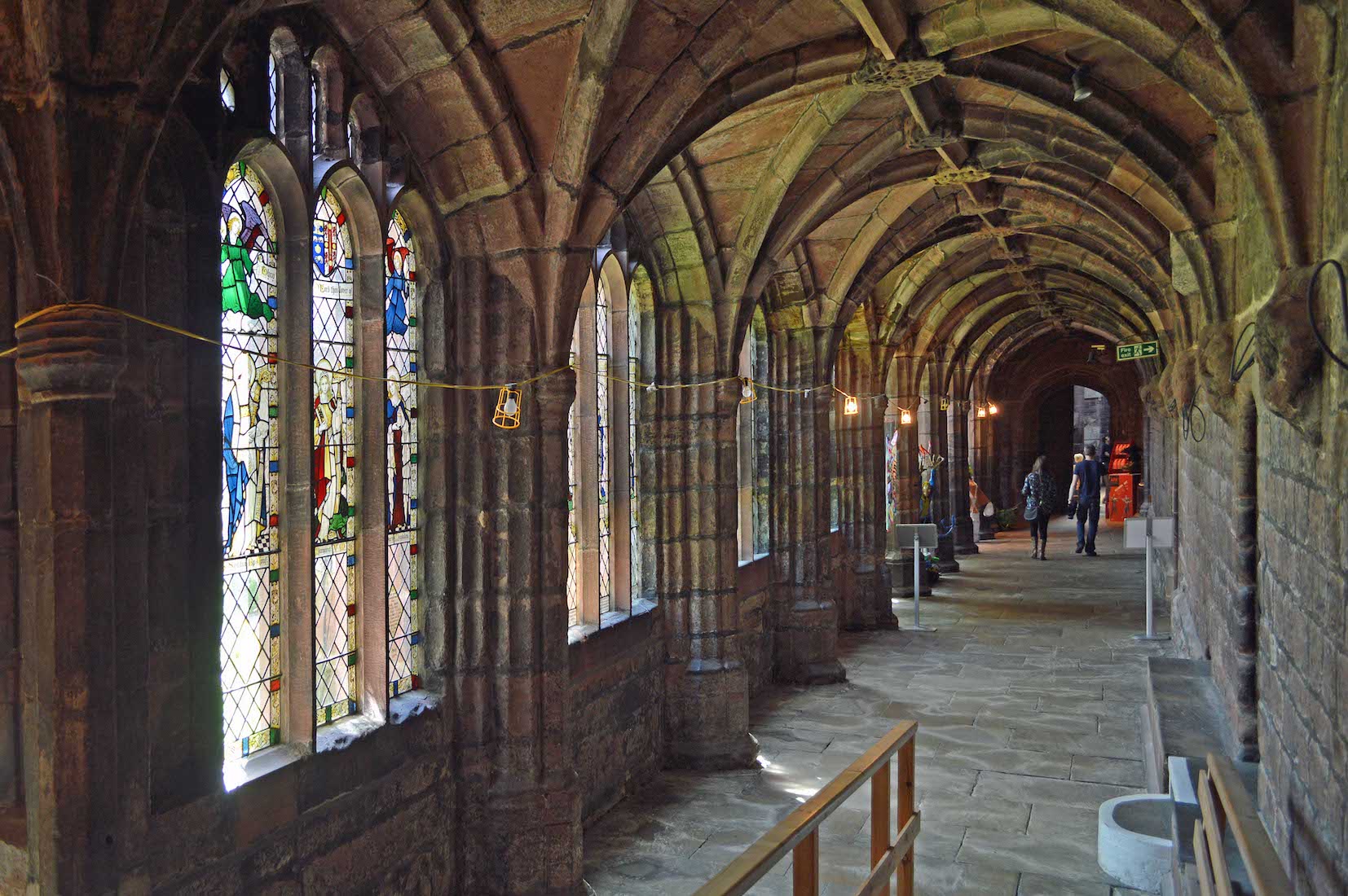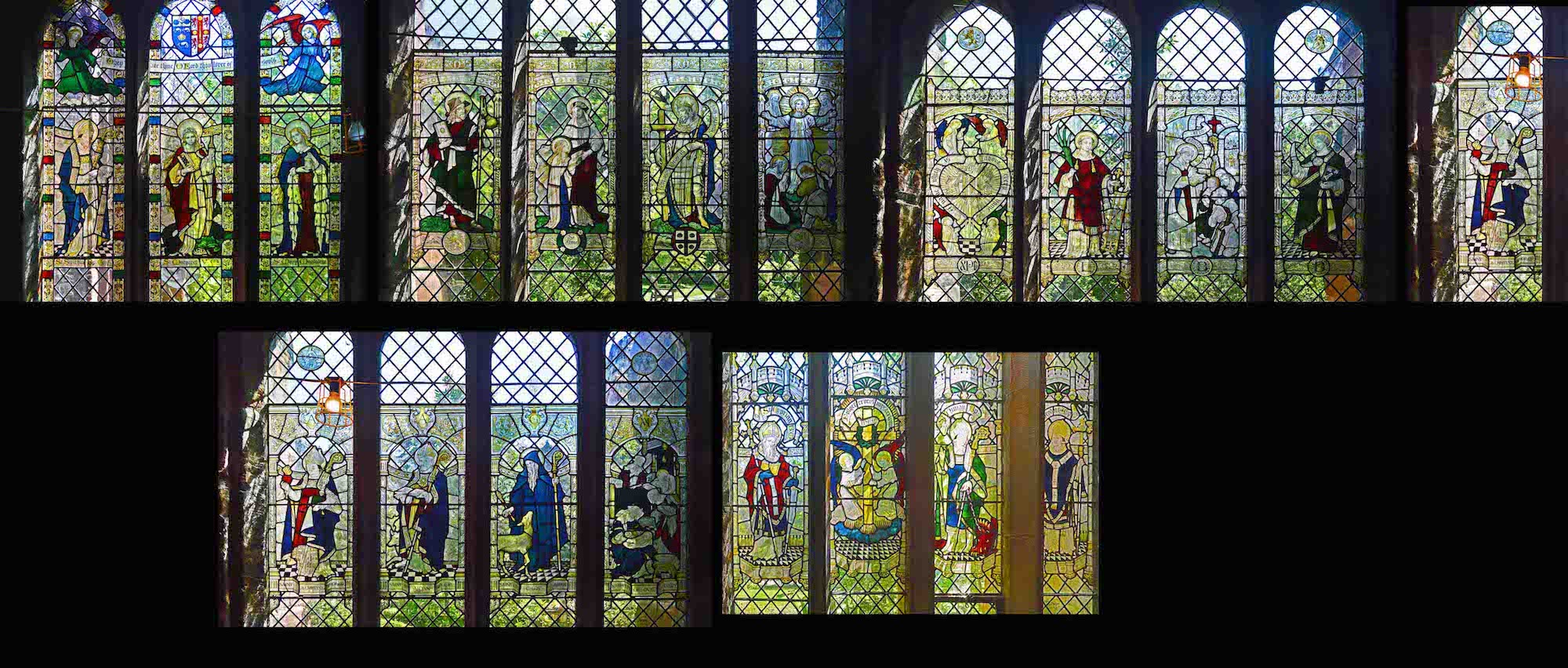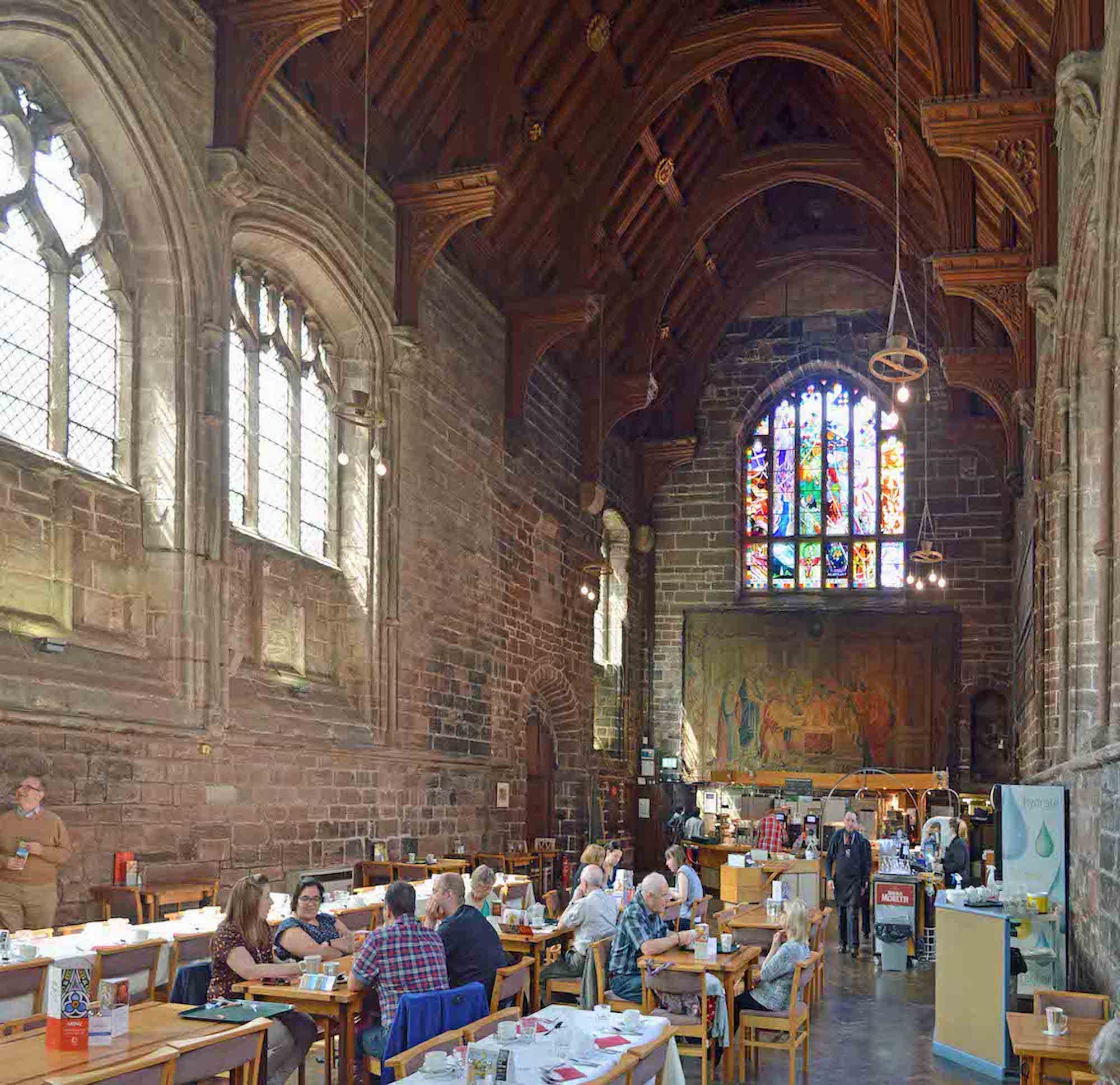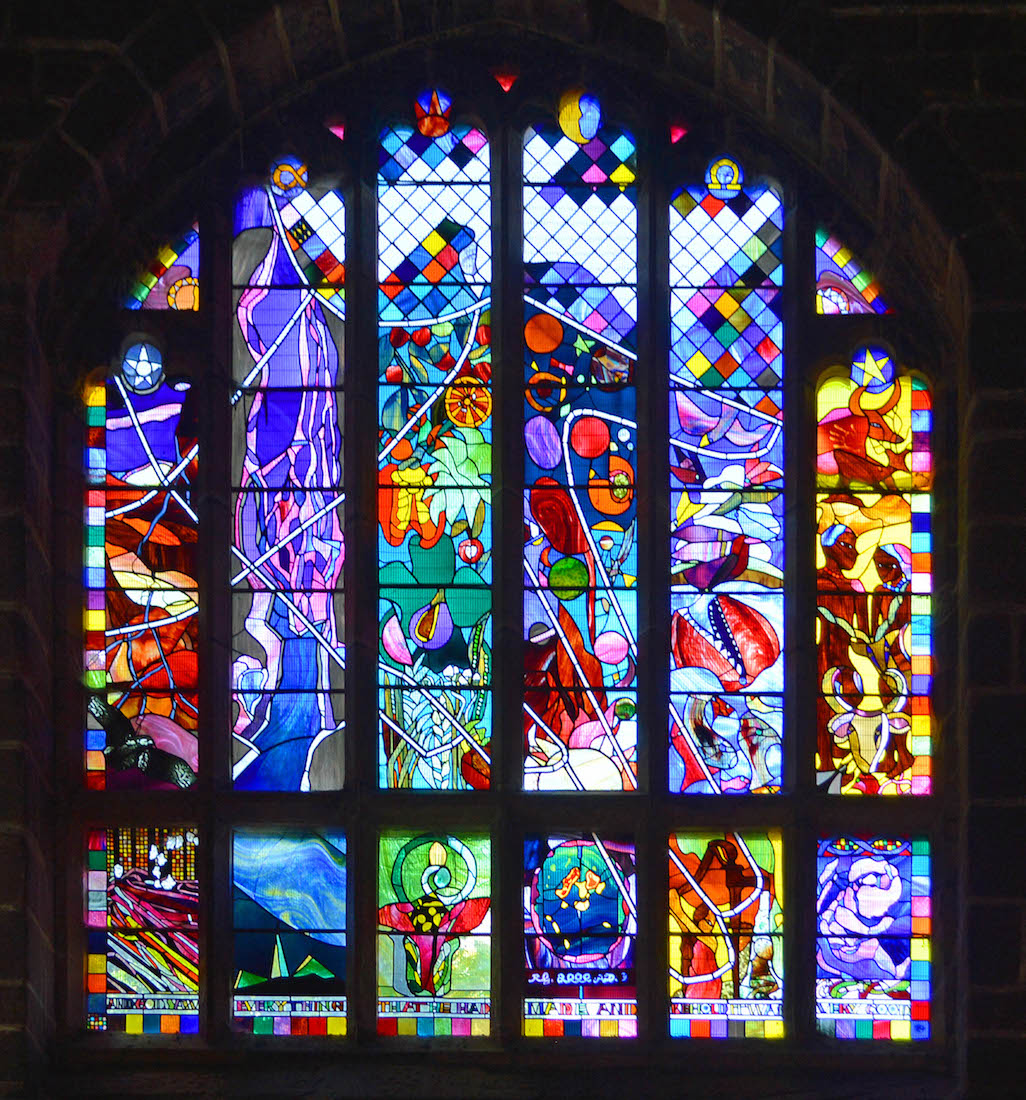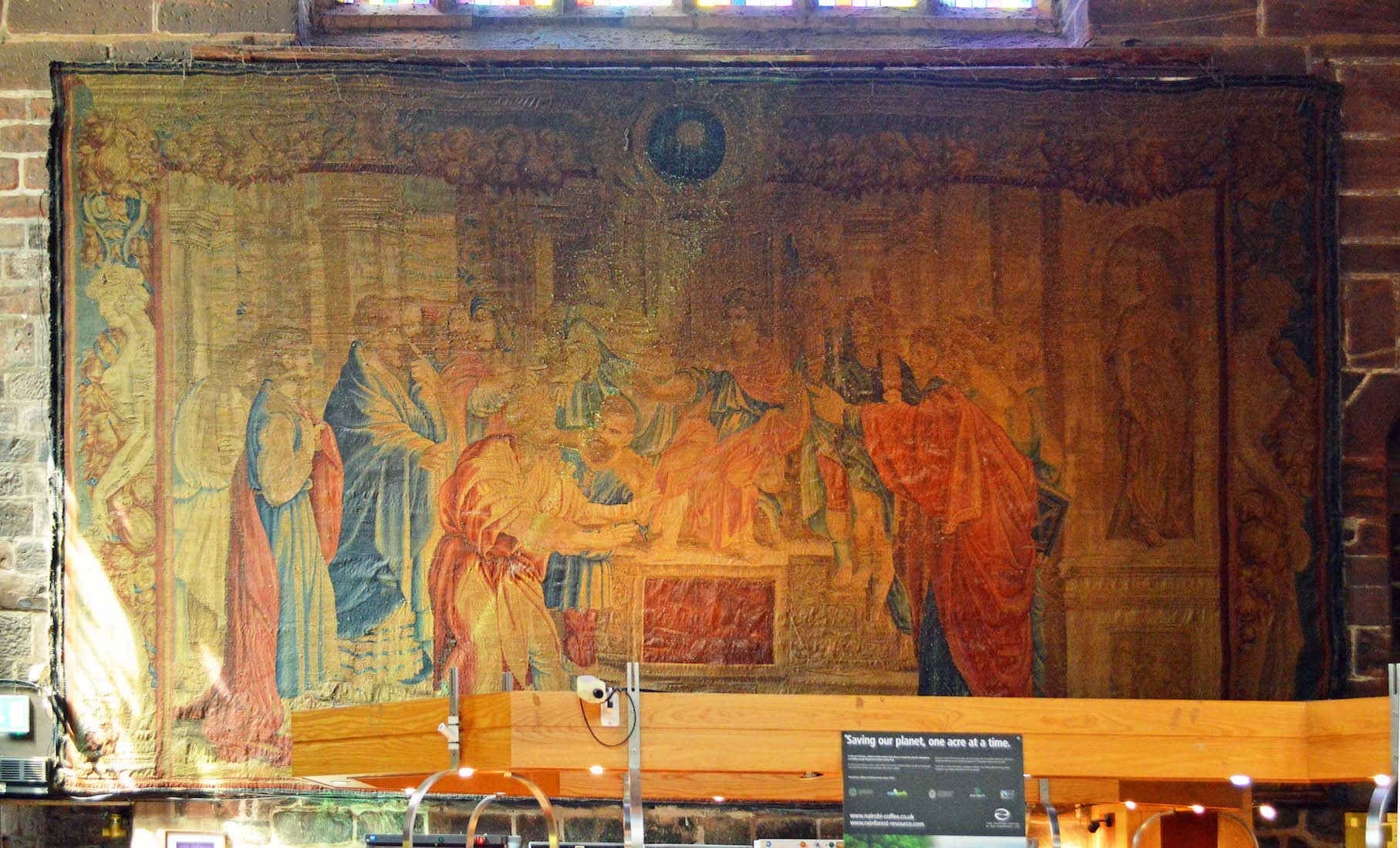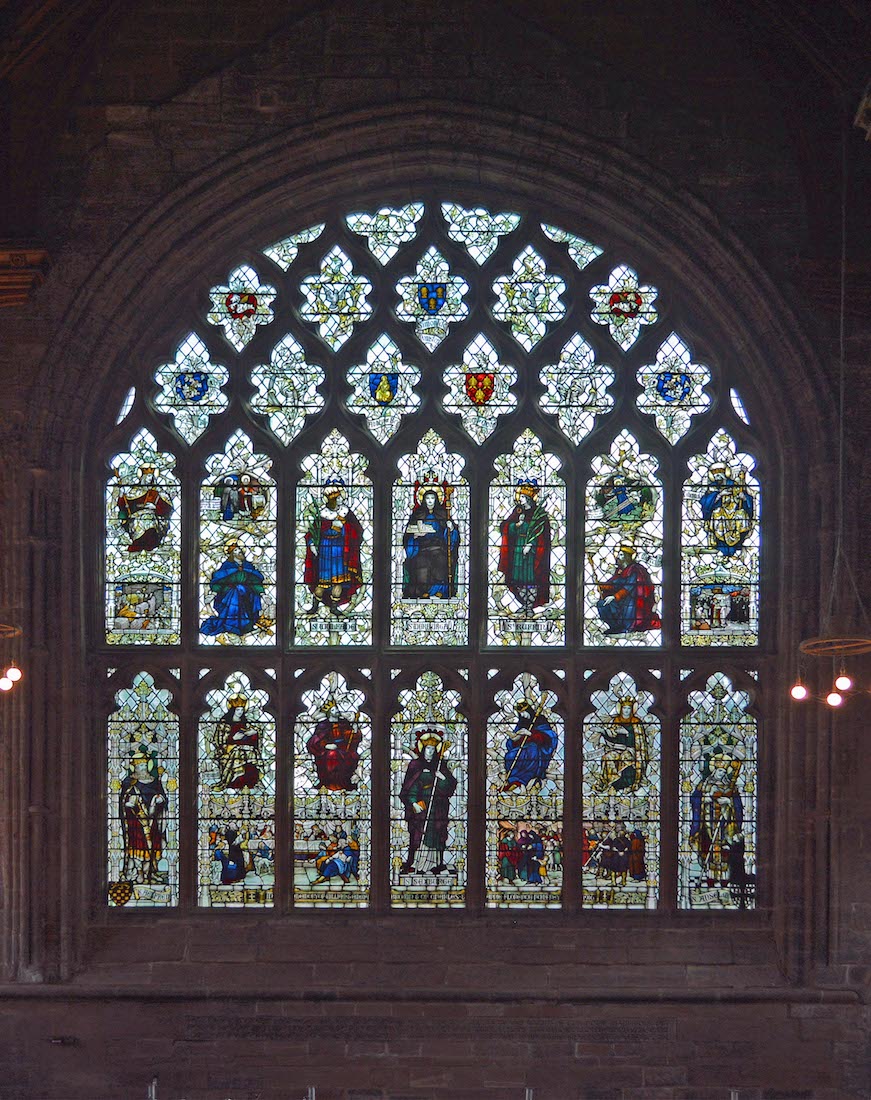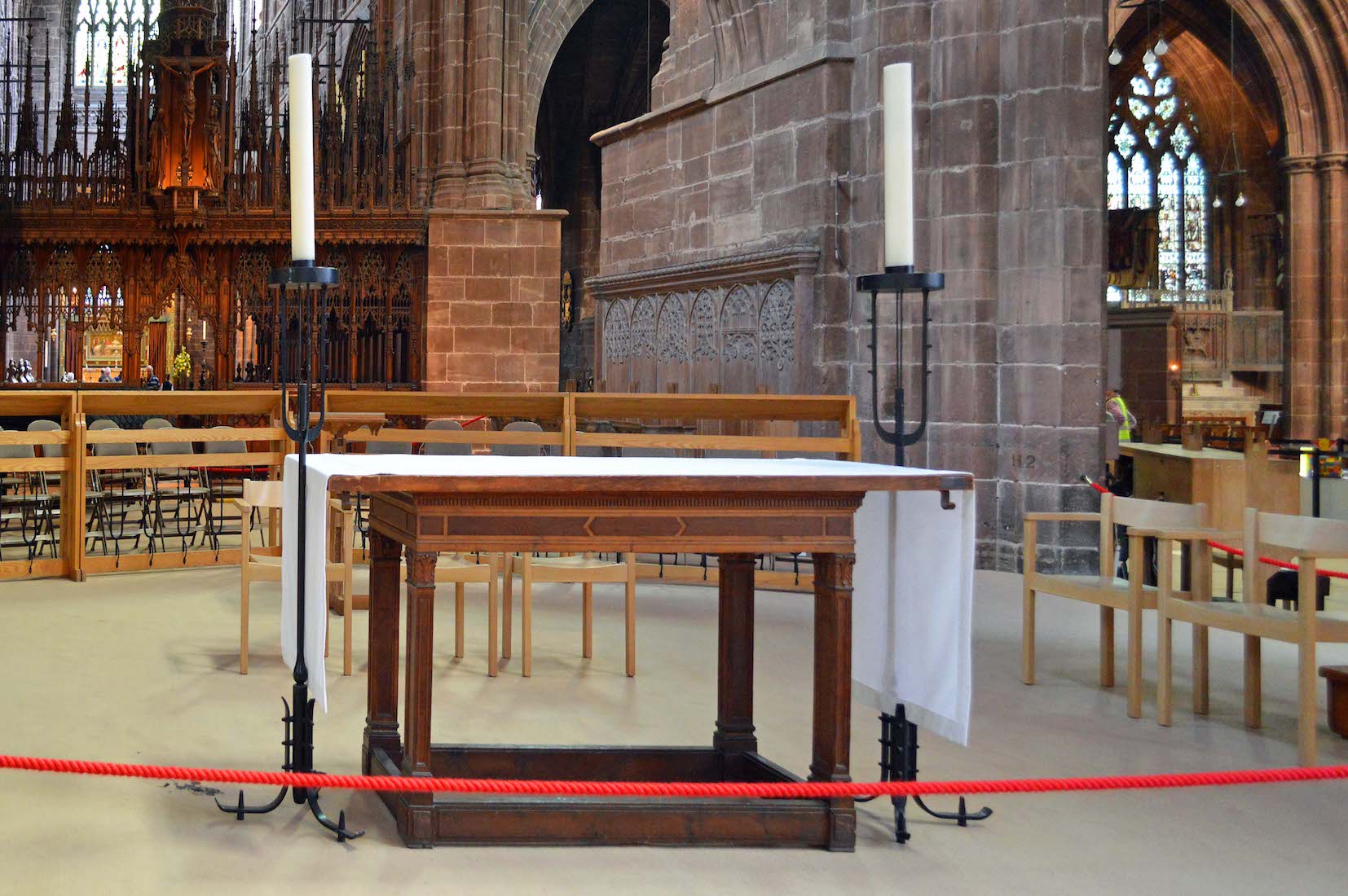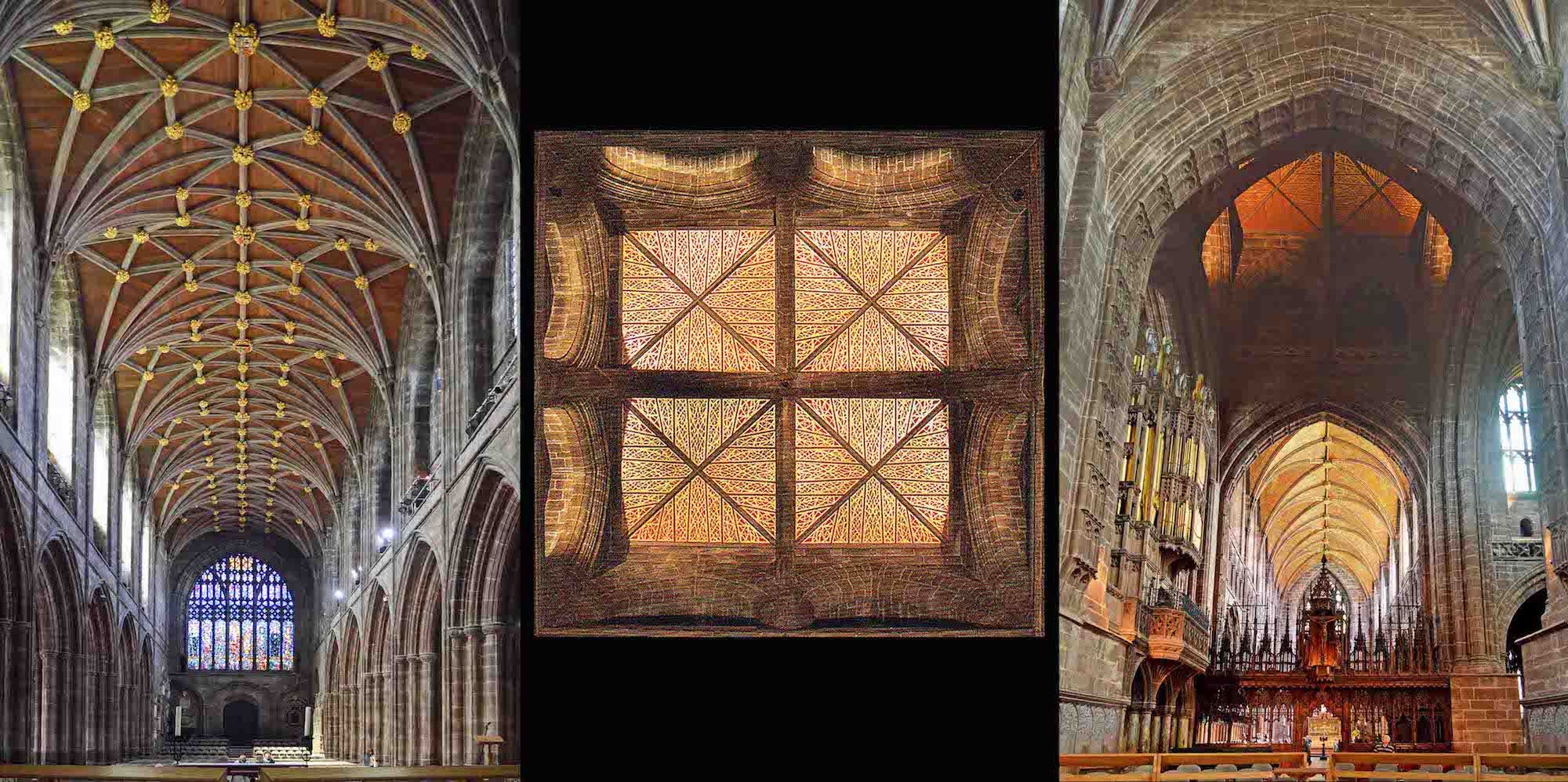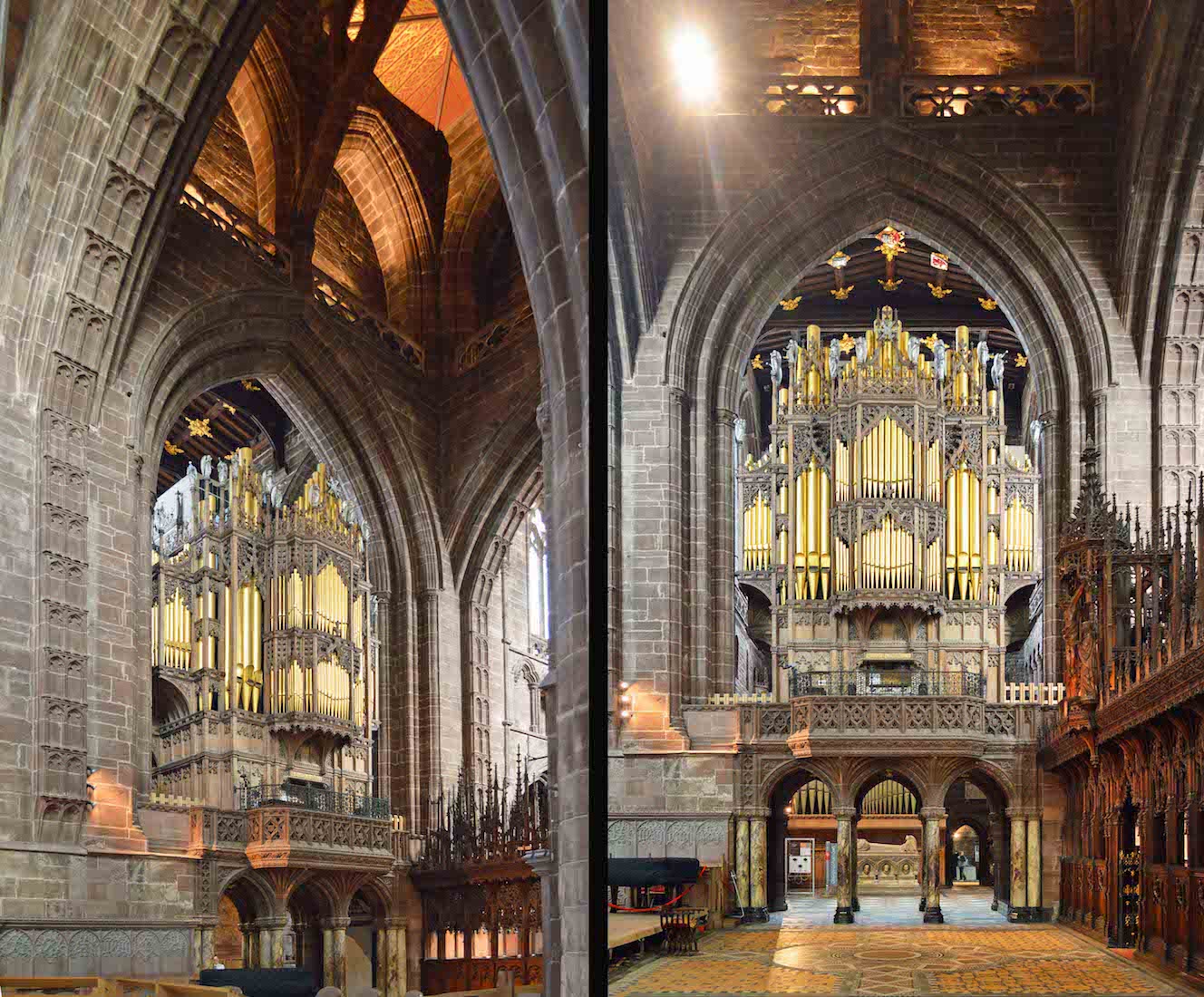
A little window at left has the text: ‘The Church’s Kalendar pictures the windows of this cloister. Blessed by God in his angels and in his saints.’ Then from left are pictured: St Clement of Alexandria, St Andrew, St Nicholas, St Ignatius, James son of Alphaeus(?), Christmas, St Stephen, St John, the Holy Innocents, St Hilary, the Circumcision, the Epiphany, St Anthony. PLAN
42. CHAPTER HOUSE
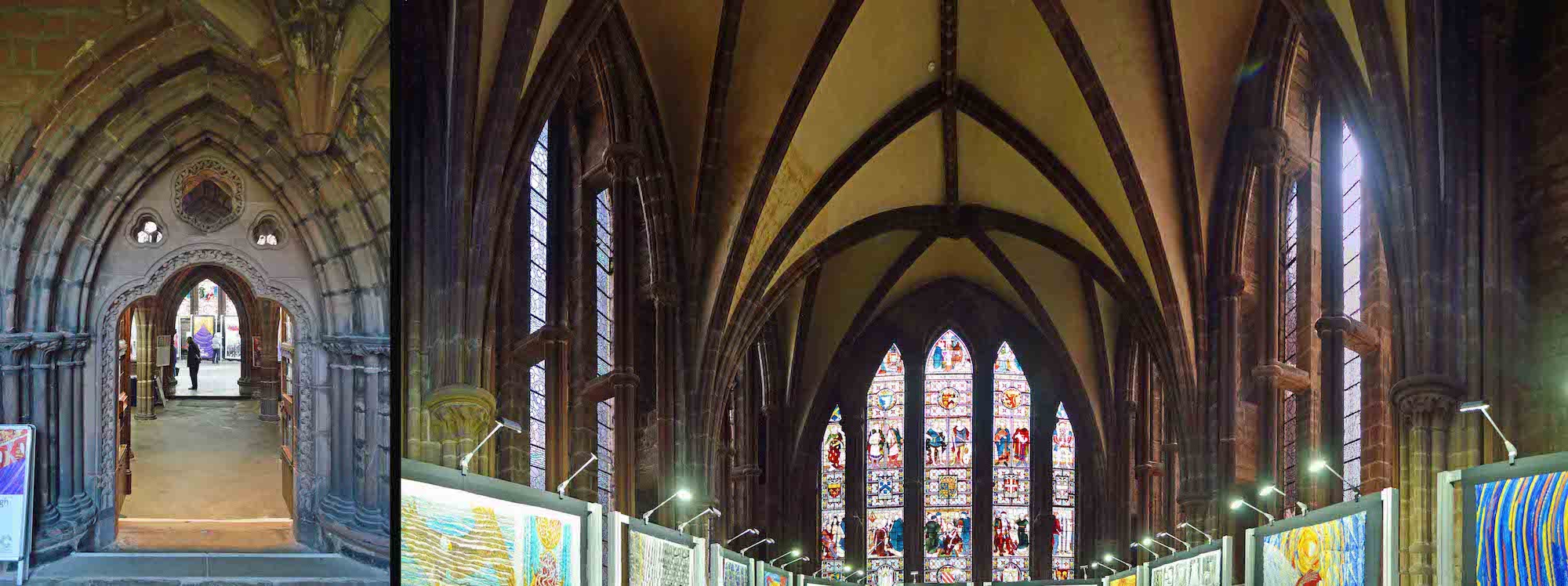
At this point in our exploration we come to the entry to the chapter house. We enter through a small vestibule. The chapter house itself is quite small, and at the time of my visit, cluttered with art displays! The chapter house was built in the 13th century. Here the monks assembled each day in Chapter for spiritual conference, and it was the burial place of the abbots. The Dean and Chapter now meet here each month to deal with Cathedral business.
43. CHAPTER HOUSE WINDOWS
The chapter house has stained glass in its East window by Heaton, Butler and Bayne and grisaille windows in the north and south walls, dated 1882–83, by Blomfield. It contains an oak cope cupboard from the late 13th century. The front of the chapter house was rebuilt to a design by Hussey. The East window is interesting: it contains a number of crests, and scenes from the early history of the monastery and the Cathedral.
44. TO THE BISHOP’S PARLOUR
North of the chapter house is a long passage with a stained glass window at the end. The window shows a scene from an old legend where the giant Offerus carries the Christ child across the river, and is renamed Christopher. A small door at the left leads through to a small chamber with another window. This window shows Ranalf of the St Werburgh Monastery (1299 – 1363) writing his chronicles. But passage beyond this point seems to be barred: the parlour is now used as a meeting room.
45. EAST CLOISTER WINDOWS II
We return to the East cloister where there are more windows ... . Shown here from left are: St Wulfstan, St Fabian, St Agnes, St Vincent, St Polycarp, the Conversion of St Paul, St John Chrysostom, the Purification, St Werburgh, [four window lights with covered inscriptions], St Thomas Aquinas, St Gregory, St Patrick, St Cuthbert.
46. NORTH CLOISTER
This brings us to the North cloister which we now follow.
47. NORTH CLOISTER WINDOWS I
These windows show from left: St Benedict, The Annunciation, St Richard, St Ambrose, Palm Sunday, Maundy Thursday, Good Friday, Risen Christ, St Leo, St Alphege, St Anselm, St George, St Mark Evangelist, St Catherine of Siena, SS Philip & James, St Athanasius.
48. MONKS’ LAVABO
Below the last two windows is the monks’ lavabo. This is a stone shelf where basins of water would have been placed for monks to wash their hands before eating in the adjacent refectory.
49. NORTH CLOISTER WINDOWS II
Now continuing with the North cloister windows, from left: St Monica, Christ teaching, the Coming of the Holy Spirit(?), St Dunstan, St Aldhelm, St Augustine, Venerable Bede, St Boniface, St Columba, St Barnabas, St Basil, St Alban, St John Baptist, SS Peter & Paul, St Iranaeus, The Visitation.
50. WEST CLOISTER
We next turn the corner to investigate the West cloister. At this point, behind us is the entry to the refectory. We shall definitely return here shortly!
51. WEST CLOISTER WINDOWS I
The West cloister windows show, from top left: St Swithun, St Margaret, St Mary Magdalene, St James, St Anne, Unnamed King, the Glorified Christ, A Name which is above every Name, St Lawrence of Rome (carrying his griddle), St Bernard, St B___ , St Augustine, St Aidan, St Giles, Nativity of Our Lady, St Cyprian, Angels and Cross, St Ninian, St __?__ .
52. WEST CLOISTER WINDOWS II
The final windows on this side show from left: four Angels under the influence of the Holy Spirit, St Matthew, St Jerome, St Claire, St Francis, St Remigius, St Faith, St Edward, St Denys (carrying his head!). The end window shows: Hugh Lupus, St Ermengild, St Thomas of Canterbury (with stigmata), King Henry II.
54. WEST REFECTORY CREATION WINDOW
The Creation Window on the West Wall is a colourful interpretation of the Six Days of Creation installed in 2001 to celebrate the Millennium, designed and made by Rosalind Grimshaw. In 1983, Ros Grimshaw, was diagnosed with Parkinson’s disease. She refused to allow her illness to prevent her from working, and in 2000 won the commission to design and make this window – considered to be the finest and most inspired work of her whole career.
55. WEST REFECTORY TAPESTRY
On the refectory’s West wall there is a tapestry depicting a scene from the book of Acts showing Elymas being struck with blindness. It was woven at Mortlake in the 17th century from a cartoon by Raphael.
56. EAST REFECTORY
In the opposite direction we can survey the refectory and the stained glass window at the far end. Notice the colourful coats of arms in the wooden ceiling.
57. EAST REFECTORY WINDOW
The East window with reticulated tracery was designed by Giles Gilbert Scott and is dated 1913. The stained glass dates from the 1920s. The outline of the two original lancet windows can be seen on either side. There is Cathedral history in this window which features King Æthelred, St Wulfhad, St Werburga (with church), St Ruffin, King Alfred, St Sexburge and St Anselm amongst others.
58. NAVE ALTAR
We leave the refectory and make our way back to the nave. The nave altar (communion table?) standing in the crossing is a very small and simple affair. It is from here that the Eucharist would be administered Sunday by Sunday.
60. ORGAN
The organ is sited between the Northern pillars supporting the central tower. The organ of Chester Cathedral is the major source of instrumental music at the Cathedral, being played for daily services and accompanying the choir, as well as being used for concerts and recitals. The choral tradition at Chester is 900 years old, dating from the foundation of the Benedictine monastery. This Whitely/Hill/Rushworth organ has four manuals and 63 speaking stops.


